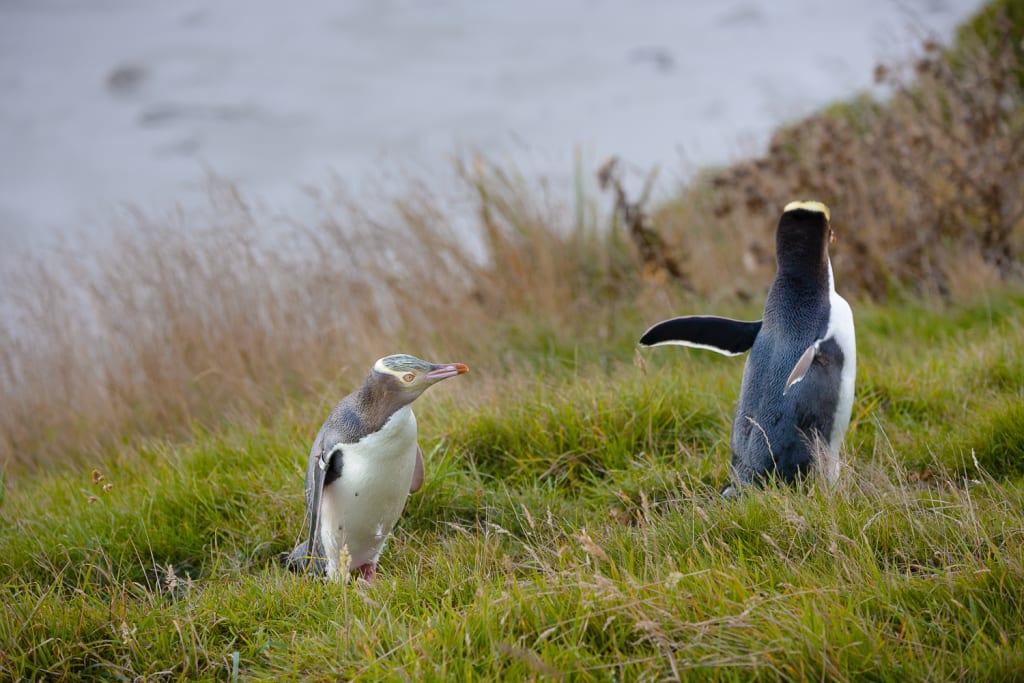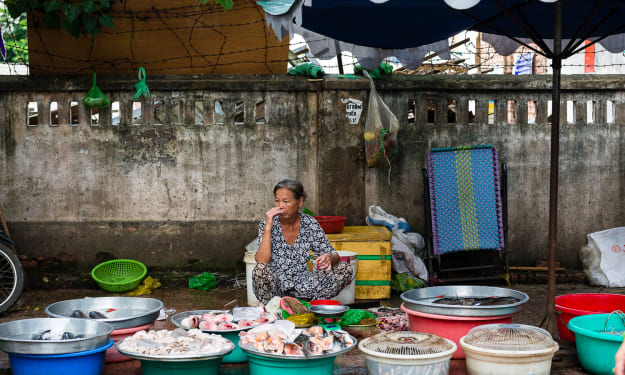
“Do the penguins know we’re here?” asks the little girl.
“Yes, they do,” replies Dan, our tour guide and penguin expert. “But because we’re looking at them through such a small hole in the wall, the penguins can only see very little of us and so they think that we’re smaller than them and not a threat”.
Our group start to laugh at this little nugget of penguin logic before remembering we have to keep quiet so as not to scare the incredibly shy bird that has waddled up the beach and is now standing and preening only a couple of metres away.
I’m sitting in a camouflaged wooden hutch on a private beach at The Penguin Place on New Zealand’s Otago Peninsula. The temperature is dropping fast as dusk creeps up, but no one seems to mind. We’re here to see the Yellow Eyed Penguin, the rarest and most elusive of all penguin species, and the first has just waddled up out of the ocean and begun to climb the slope and head inland. These penguins nest on land and they will spend the night here before heading back out into the ocean at dawn to fish and eat. It is April and Dan explained earlier that this is their fledgling period, where last season’s chicks have begun to go out to sea, and adult penguins need to eat and put back on weight they lost before being confined to land while they moult their coats and grow new ones in preparation for a new years courting season.

They have only a few weeks to do this and it is a dangerous time for the penguins as energy levels are low and they are exposed to starvation and attacks by predators, which include foxes and ferrets on land, and sea lions, fur seals and sharks in the water. It seems like everyone is out to get them, and indeed only 20% survive to adulthood.

There are only around 3,000 Yellow Eyed Penguins left, and The Penguin Place offers a sanctuary free from predators for these rare and elusive animals who otherwise may be too afraid to venture back to land because of who might be waiting for them. Their numbers have been gradually increasing since 1990 when there were estimated to be only about 300. This is due in no small part to the dedicated team at The Penguin Place, who fund their conservation work entirely from the informative and entertaining tours that have run daily since 1985 when Howard McGrouther gave over his own farmland to care for the penguins and provide them a safe place to raise their young.
Also to be found on the grounds are New Zealand fur seals, blue penguins — “They’re the smallest penguins of all but with the biggest attitude,” offers Dan — and the occasional yellow crested penguin who are more common on the west coast but occasionally take a wrong turn and end up on the Otago Peninsula.
The penguin outside our hutch cranes his neck, stretches his wings outwards and with a wiggle that starts at the neck, gathers momentum as it travels downwards and ends up in his tail, lets out the kind of squawk that could be expected from some giant, prehistoric ancestor. Then, as if he just realised he’s forgotten his house keys, turns around and waddles quickly back down the slope from where he came. His little head dips below the horizon and we can no longer see him, but we can hear more squawks. Everyone looks around at each other, confused, wondering if we’ve scared him away. Then we hear the same squawk from another voice, and the response from our penguin. A moment later two little penguin heads bob above the horizon and our friend returns with what Dan explains is his penguin girlfriend. Still squawking at each other, they sound like a bickering married couple. Which I suppose may not be far from the truth.

Despite the apparent argument, the two penguins seem happy to be in each others company and spend a few moments circling each other before continuing their waddle along the small hilltop and into the brush to find their nest.
No one speaks for a moment, just a lot of silent grins at the rare sight just witnessed and the similarities to humans in the way these little birds interact and communicate with one another. Then a moment later, a whisper: “Look, there’s some more!” and we all turn to look out onto the beach again as more Yellow Eyed Penguins, a whole extended family this time, hurl themselves out of the water, bellies full of fish, onto the sand and begin the long amble back to the safety of home for the night.

About the Creator
Mark Eden
Freelance travel photographer and writer based in Melbourne, Australia. I create images and words that help tell the stories of our vibrant, diverse world and its people.
www.markeden.com.au






Comments
There are no comments for this story
Be the first to respond and start the conversation.